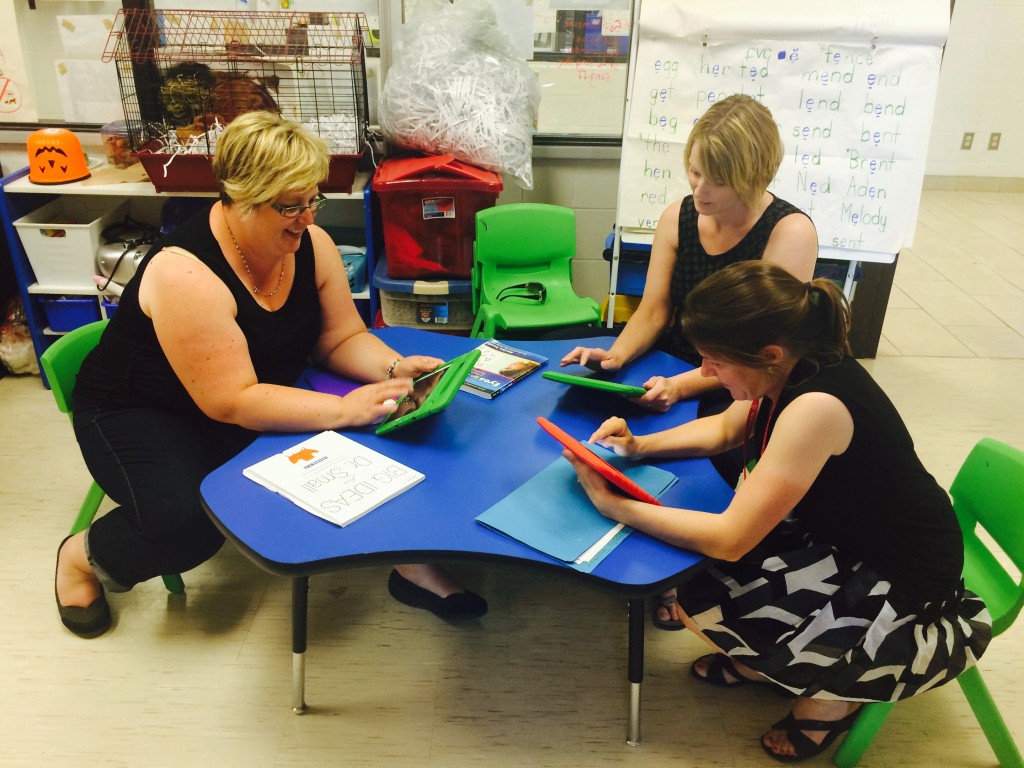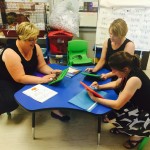This project used a “One Screen” on the iPad, involving Grade 1, 3 and 6 students at Southview P.S. Students were encouraged to question, to problem-solve and to create their own math inquiry based on the Big Ideas of the Ontario math curriculum. Students chose an app in our “One Screen” to demonstrate their learning of the big ideas in math. The apps on the “One Screen” were chosen based on the SAMR model. This allowed students to modify and redefine their learning. For example, a student may wish to use a screencasting app to create a video to represent, compare and order numbers and post the video on their class homework blog. Students will differentiate their learning as they persevere to solve mathematical problems, and will demonstrate their thinking in different ways. Students will communicate and reflect on their learning. Furthermore, students will collaborate with others and become more engaged in the problem-solving process. There will be a focus on supporting teaching and learning mathematics through problem-solving. Teachers will use iPads and networking platforms (Google Apps for Education) to assist teacher and students in co-learning.
Team Members
Mary Beth DuChene
Limestone District School Board
Melinda Reid Gillam
Limestone District School Board
Shannon Boutilier
Limestone District School Board
Team Photo

Professional Learning Goals
- Teachers will use the SAMR model to evaluate a variety of iPad apps and choose the most suitable ones that will allow students to use higher order thinking and best demonstrate their understanding.
- Teachers will support the different learning styles of the students.
- Teachers will encourage inquiry-based learning to improve student engagement and achievement in mathematics.
Activities and Resources
- teachers and students became familiar with a variety of iPad apps (e.g., Telgami, Aurasma, QR code, etc.) to demonstrate students understanding
- collaboration between teachers to create open problem-solving lessons and share lesson plans through Google Apps For Education (GAFE)
- used the SAMR model to evaluate iPad apps to encourage students’ higher level thinking
- students became “techsperts” and shared their knowledge and expertise of the apps they used to demonstrate their thinking and understanding to their peers and other classes
- created a “One Screen” on all of our iPads
- students completed pre- and post-surveys of their attitudes towards math and the use of technology
Unexpected Challenges
- Not all apps were used on the “One Screen” based on student comfort level. Once a student became familiar with an app, they tended to primarily use that one regardless the task.
- managing the use of technology (i.e., 28 students limited to number of iPads)
- time to complete projects
Enhancing Student Learning and Development
Student learning was enhanced. Students were empowered and engaged. They were offered choices to share their learning. Students were able to show their learning in a way that best suited their learning style(s). This resulted in more collaboration between students and more student engagement.
The “One Screen” acted as an equalizer in the classroom. It created a level playing field for all students. Students self-assessed their strengths and weaknesses and chose an app that would be the best app to share their learning.
Sharing
- We have shared our “One Screen” with staff at Southview Public School and most of the iPads in the school have been set up with the “One Screen.”
- We could share the “One Screen” at future professional development within the Limestone District School Board.
Project Evaluation
The student voice, indicated through a survey, showed almost 100 per cent positive feedback about using technology in mathematics.
Students were:
- engaged with their learning
- constructed their own understanding
- created evidence of their learning
- reflected on their learning
- shared their learning
- collaborated with others to add to their learning
Resources Used
Ontario Math Curriculum
https://www.edu.gov.on.ca/eng/curriculum/elementary/math.html
Small, Marian. Good Questions: Great Ways to Differentiate Mathematics Instruction
Small, Marian. Big Ideas From Dr. Small Grade K-3
Resources Created
These resources will open in your browser in a new tab, or be downloaded to your computer.




